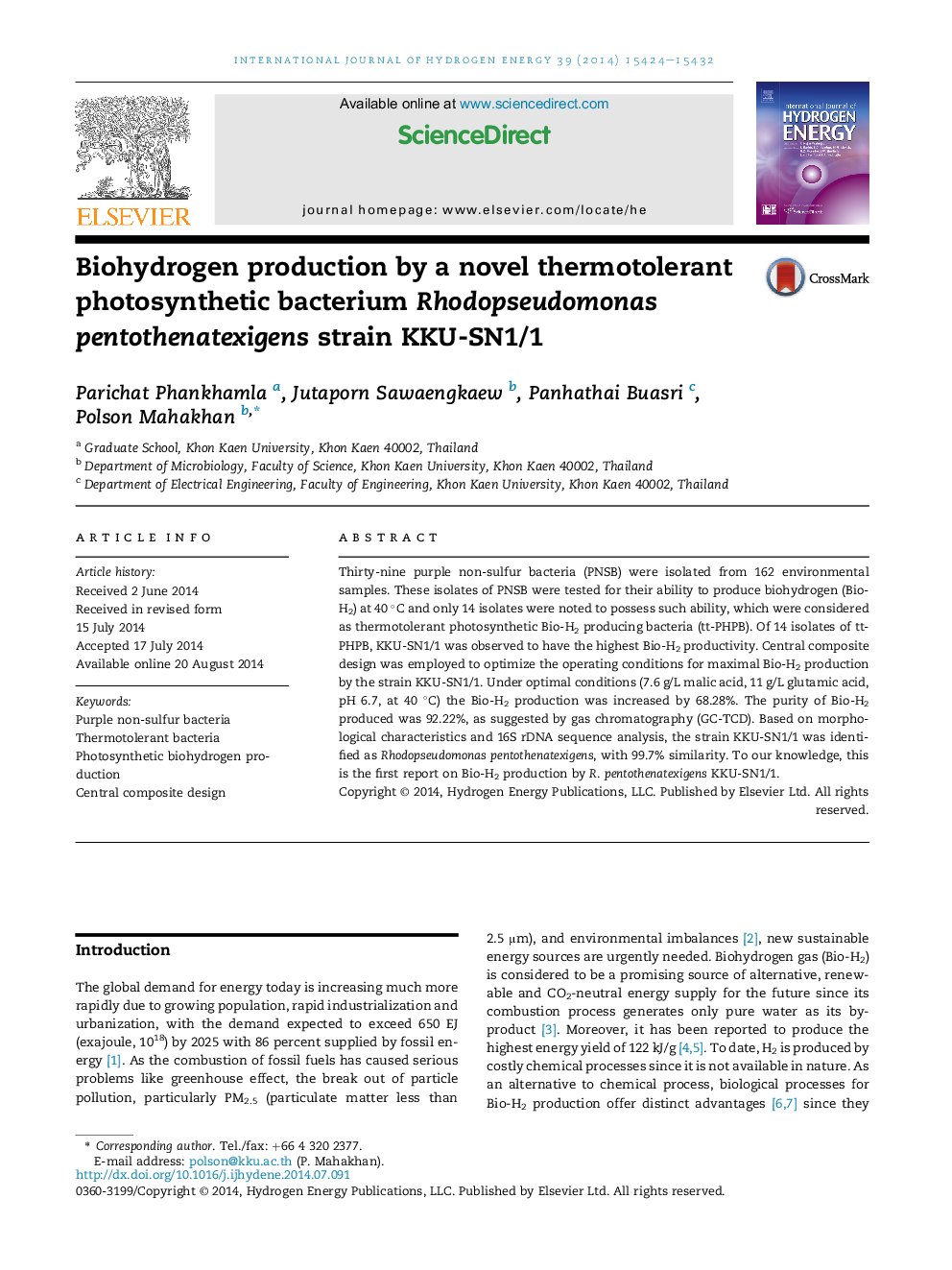| Article ID | Journal | Published Year | Pages | File Type |
|---|---|---|---|---|
| 1272380 | International Journal of Hydrogen Energy | 2014 | 9 Pages |
•PNSB were isolated from soils, mud and freshwater samples.•The isolate KKU-SN1/1 produced the highest yield of Bio-H2 at 40 °C.•The isolate KKU-SN1/1 was identified as Rhodopseudomonas pentothenatexigens.•R. pentothenatexigens KKU-SN1/1 was first reported to produce Bio-H2 at 40 °C.•RSM was useful for optimizing the operating process for maximal Bio-H2 production.
Thirty-nine purple non-sulfur bacteria (PNSB) were isolated from 162 environmental samples. These isolates of PNSB were tested for their ability to produce biohydrogen (Bio-H2) at 40 °C and only 14 isolates were noted to possess such ability, which were considered as thermotolerant photosynthetic Bio-H2 producing bacteria (tt-PHPB). Of 14 isolates of tt-PHPB, KKU-SN1/1 was observed to have the highest Bio-H2 productivity. Central composite design was employed to optimize the operating conditions for maximal Bio-H2 production by the strain KKU-SN1/1. Under optimal conditions (7.6 g/L malic acid, 11 g/L glutamic acid, pH 6.7, at 40 °C) the Bio-H2 production was increased by 68.28%. The purity of Bio-H2 produced was 92.22%, as suggested by gas chromatography (GC-TCD). Based on morphological characteristics and 16S rDNA sequence analysis, the strain KKU-SN1/1 was identified as Rhodopseudomonas pentothenatexigens, with 99.7% similarity. To our knowledge, this is the first report on Bio-H2 production by R. pentothenatexigens KKU-SN1/1.
